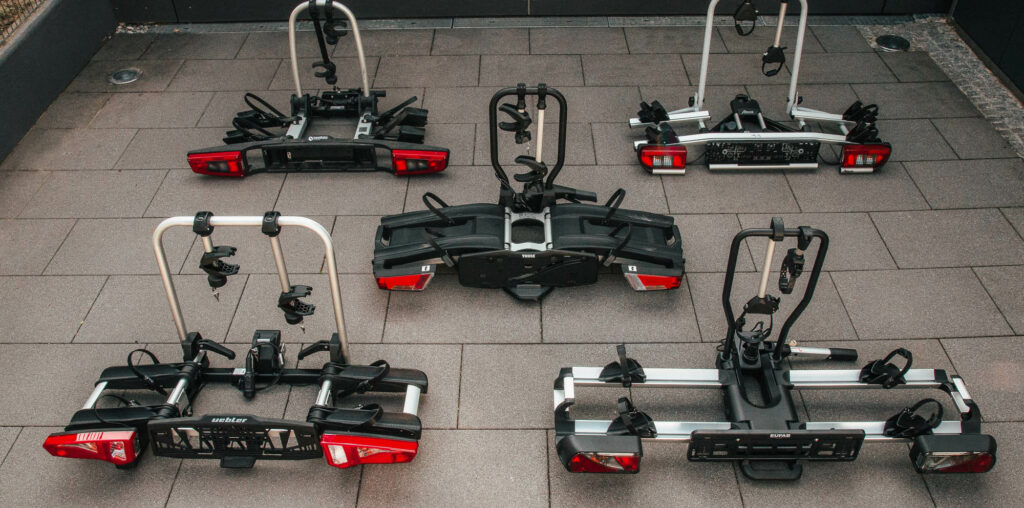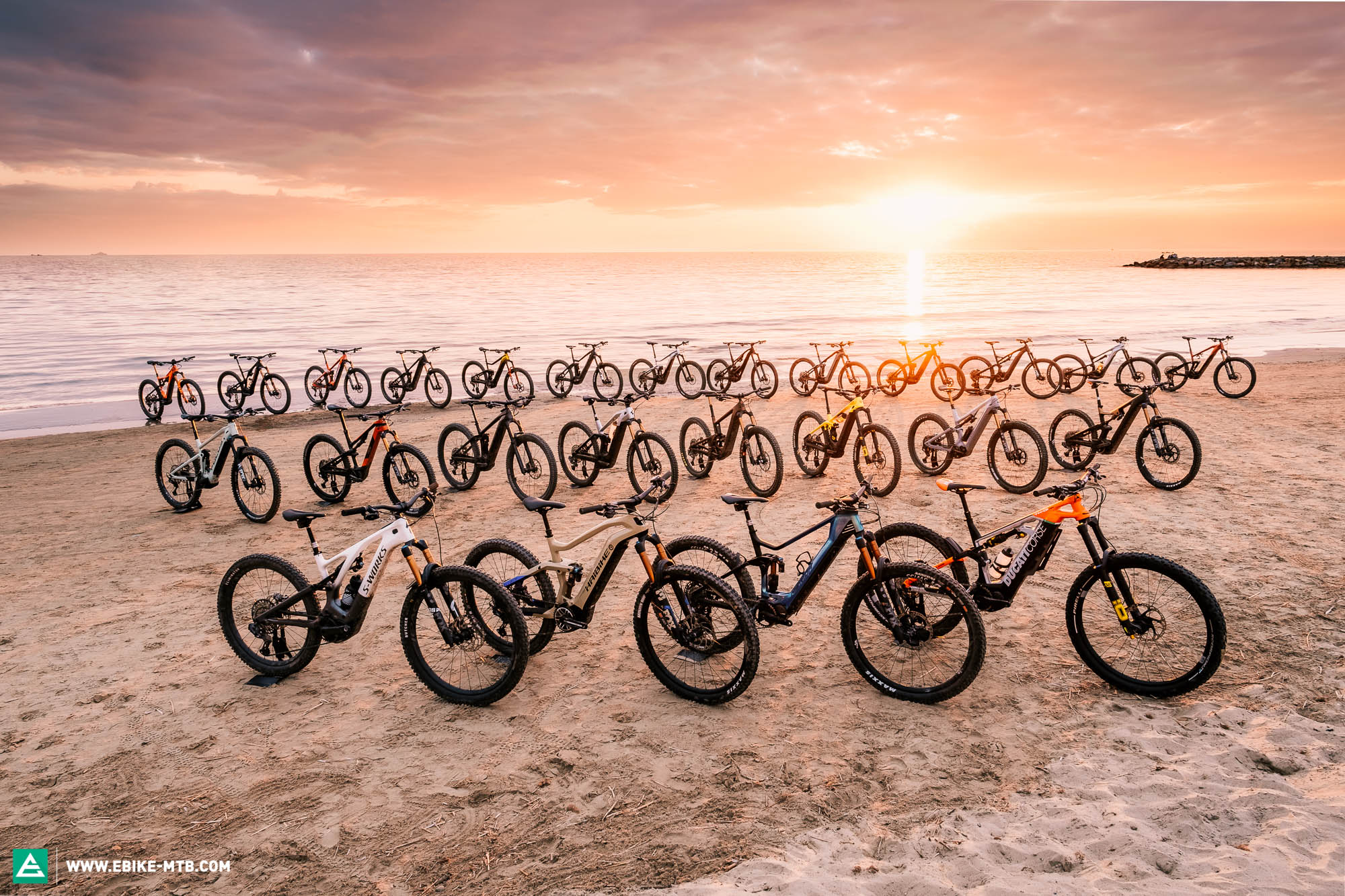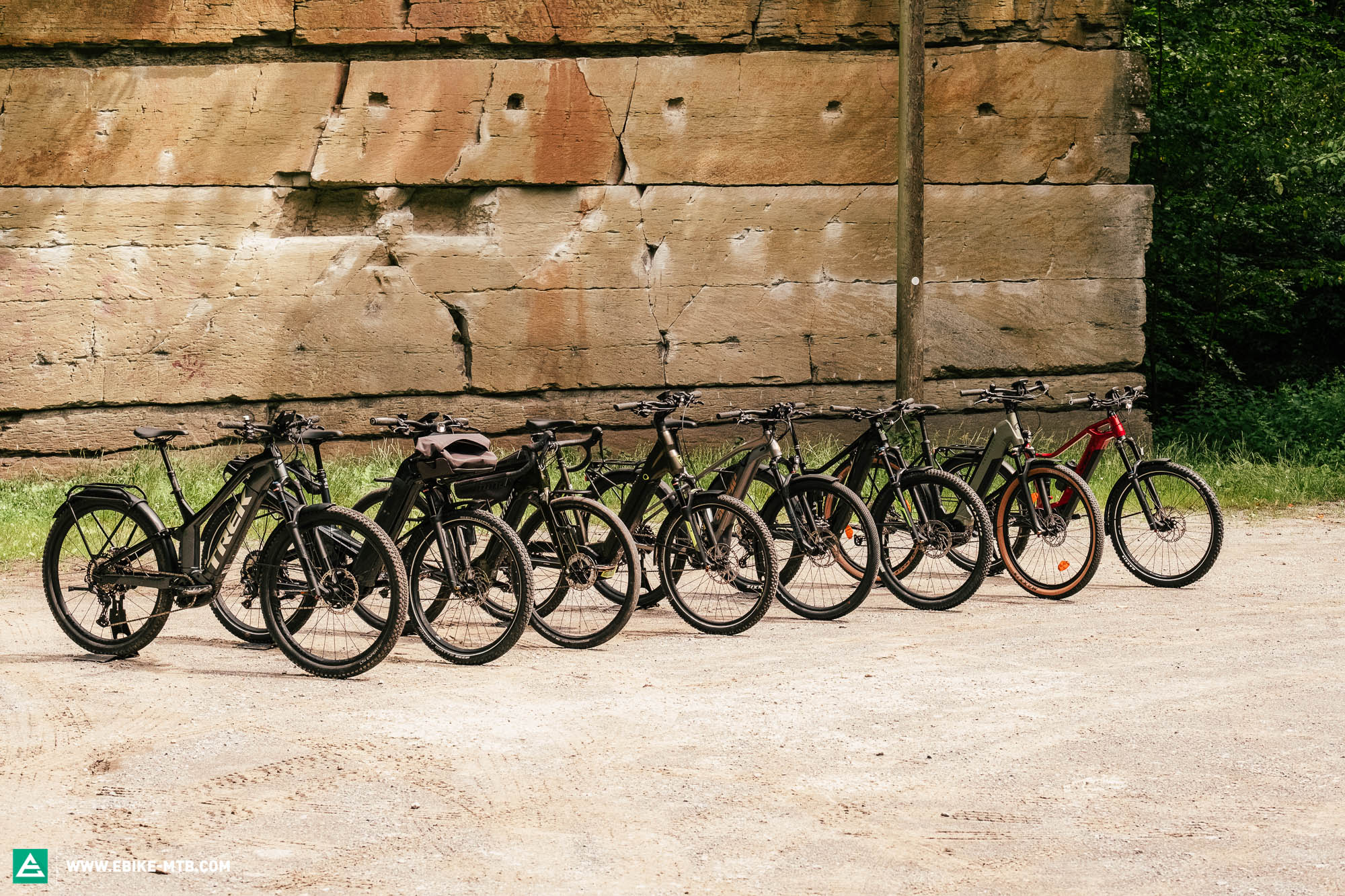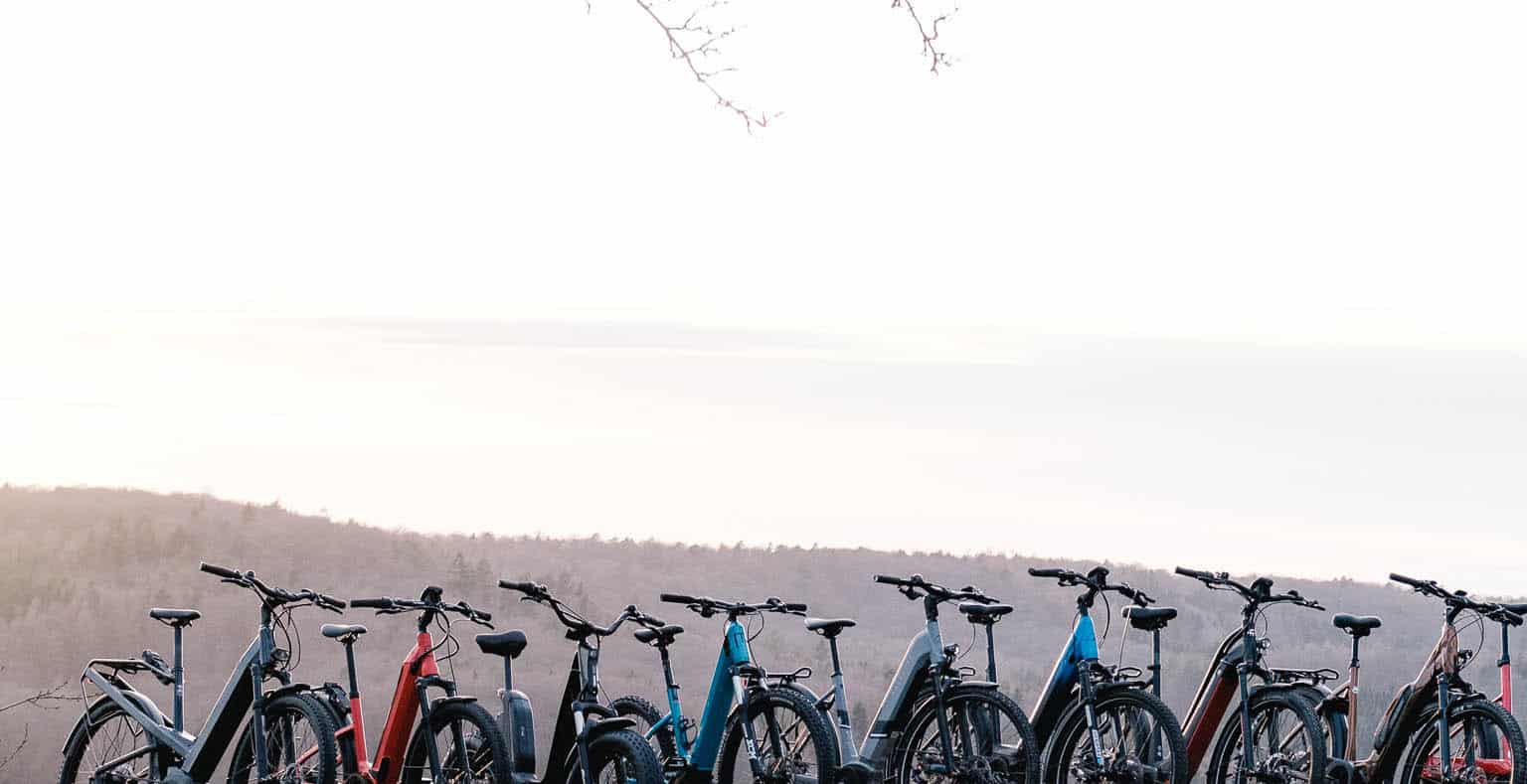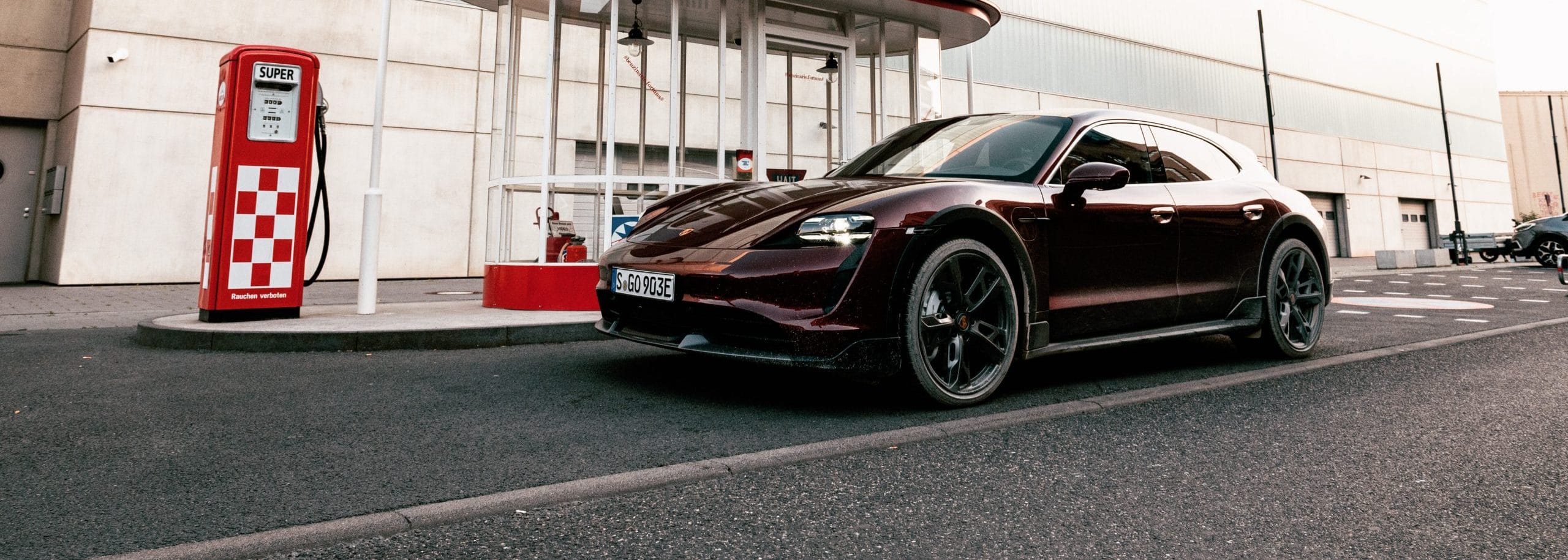Would you like to take your eMTB along on holiday or ride new trails that you can only get to by car? In that case, a hitch rack is often the best choice. But which one is best for you and your bikes? We tested 5 hitch racks for eMTBs and tell you what to look for to avoid disappointment and get to your destination in one piece.
Before we get into the review, we would like to tell you about our latest print edition. The E-MOUNTAINBIKE Print Edition 2021 is our fourth annual edition and the ultimate guide in your search for the perfect eMTB. Spread over 260 pages of high-quality print, we offer you a comprehensive buyer’s guide, reviews and details of 35 bikes and a group test of the 8 most exciting motors. You’ll also find many helpful tips and a guide to the most exciting eMTB trends – all of this is wrapped in a high quality print format. Click here for more information or order it directly in our shop!
There is nothing better than exploring trails, routes and landscapes aboard an ebike. But at some point you’ll know all the local paths and trails like the back of your hand and you’ll long to discover something new. To do this, you’ll first have to get your bike safely to some place new. We tell you what to consider when planning to transport your eMTB by car. Among the three common carrier systems, we focused on hitch racks. Why? Because not everyone can lift a 25 kg ebike onto the roof of their car. We also excluded boot racks since they aren’t compatible with every car, requiring a certain hatchback design and the corresponding slot for the carrier in the body.
Table of content
- The hitch racks test field
- How we tested
- What do I have to keep in mind?
- Tops and flops of our group test
- Which is the best rear rack for your ebike?
The test field – The hitch racks on test
We were looking for hitch racks that can carry heavy eMTBs. Four brands sent us their foldable models, with Thule sending us the EasyFold XT 2, EAL the EUFAB Premium TG, Westfalia Automotive the Bikelander Classic and Uebler the i21. Atera sent us the Strada E-Bike ML, which is the only hitch rack on test that can’t be folded up, with the U-bar being its only part that can actually be folded down.
How we tested the racks
Before delving deeper into the test, we must clarify that this isn’t a driving test. We weren’t interested in how the car drives with the hitch rack attached, focusing instead on usability, the advantages and disadvantages of the individual models and the most important points that you should consider before buying to avoid disappointment.
All the racks were packed in boxes when we received them. After installing the racks on the hitch, we took two eMTBs and mounted them on the racks. We did this several times with each rack to uncover any problems, stand-out features and no-go’s, finding out their respective strengths and weaknesses. Spoiler alert: not every hitch rack was compatible with every combination of bikes. Depending on the geometry of the frame and the diameter of the tubes, the clamps didn’t always work the way they should. Of course, we couldn’t try it out with all the bikes on the market. As such, it’s possible that a hitch rack that worked well with our bikes won’t be as good with the bikes you have. The rack manufacturers are aware of this and offer additional accessories. With the assistance of customer service, almost everyone should be able to find the right solution. Unfortunately, there isn’t one rack that can do it all.
Basic requirements – What to look for when buying?
1. Vertical load
The vertical load, also called the tongue weight, nose load and ‘S’ value, is the total weight of the rack and ebikes that is borne by the hitch. The maximum vertical load of the tow hitch determines how heavy the rear rack, including the bikes, can be. The hitch must be able to cope with the total weight, otherwise you risk some serious damage to your vehicle and bikes, not to mention other vehicles or pedestrians.
For example, with a maximum vertical load of 75 kg, the weight of the rack (between 12 and 20 kg) must be deducted to get to the maximum weight of the two ebikes on the rack. In our example that would be 55 to 63 kg, depending on the rack. By removing the battery from the bike, you can reduce its weight by about 2–4 kg.
Where can I find the maximum vertical load?
You should find this information in your vehicle registration certificate, user manual or on the bike rack and trailer hitch. Each country usually sets its own tolerance limit. For example, in Germany you only get fined if the maximum permissible weight is exceeded by more than 5 percent. Depending on the degree of the violation, fines can range from 10 euros to 235 euros. In addition to the fine, you also risk getting a traffic penalty point if your gross vehicle weight is overloaded by more than 20 percent.
2. Maximum load capacity of the rack
All the hitch racks on test have a maximum load capacity of up to 60 kg. It should also be noted that the maximum weight per ebike is 30 kg for all racks. However, if the total weight of the rack is 18 kg and the maximum vertical load of the hitch is 70 kg, you’re left with a maximum of just 52 kilograms for the two bikes.
3. Rail width and strap
Before buying, it’s important to check whether the rails on which the bike will be placed are wide enough for eMTBs. Often, eMTB tires are too wide for conventional rails. The strap also has to be long enough; otherwise, the wheels can’t be lashed down. However, a lot of rack brands have longer straps that can be purchased separately.
What rules should you adhere to before hitting the road?
The rules of the road should always be observed. And as soon as you hit the road with a hitch rack mounted, you must pay attention to the following 5 points:
1. Licence plate
A registration plate is mandatory for a hitch rack, as the rear registration plate on your vehicle usually gets completely obscured. If you get stopped by the police in Germany and don’t have a registration plate on the rack, you’re liable to pay a 60 euro fine. The registration plate on the rack must be the same as the plate on the car to which the rack is installed. So, the registration plate on the rack is just a duplicate to ensure that it’s clearly visible. However, this means that you must change the registration plate when installing the rack on a different vehicle. Most hitch racks come equipped with a mount that allows you to replace the registration plate quickly and easily. The registration plate on the rack must fulfil the same requirements as the registration plates on your car. In Germany, for example, it must comply with the DIN standard and have a corresponding test mark with the associated registration number. You’re not allowed to use a homemade registration plate, as that would be considered a moving violation.
Note: the registration plates on your vehicle can’t be removed, so you can’t just take the obscured registration plate on the rear and attach it to the rack.
2. Dimensions
According to German law, the bikes aren’t allowed to protrude more than 40 centimetres beyond the edge of the rack tail lights. If they do, it must be indicated on both sides with a white light facing forwards and a red light facing to the rear.
3. Lighting
For good visibility, the license plate must be illuminated in the dark. Note: check that you have the right plug to connect the rack to the car, whether it’s got 7 or 13 pins! If that isn’t the case, the taillights, brake lights and indicators on the rack won’t work.
4. Top speed
In general, you should never drive faster than 120 or 130 km/h with a rack attached to the car, even if there is no official speed limit. Most brands indicate a maximum speed of 120 km/h. According to the manufacturers of certain models, you can drive up to 130 km/h. However, the faster you drive, the greater the risk that the hitch will come loose.
5. International laws
Before going abroad, you should study the specific regulations applicable to the countries you’re driving through. For example, when travelling to Italy, Spain and Portugal, you’ll have to carry a warning sign. It must be 50 x 50 cm, covered in red and white diagonal lines made of a reflective material and it must be attached to the protruding end of the rack. In Italy and Spain, it also has to be made of aluminium. You get reversible boards that can be used for both countries.
Tips for mounting the hitch rack
Once you’ve sorted all the legal requirements, you can start mounting the rack on the tow hitch. There are a few points to observe, which are always explained in the hitch rack user manual. The tow hitch should be free of dirt and grease so that the rack doesn’t slip. It’s just as important to ensure that the rack is horizontal to allow the locking mechanism to sit securely on the tow hitch.
Almost all the hitch racks we tested were foldable, which made it easy for them to be fitted by one person. If you want to be on the safe side, make sure that the mounting mechanism is lockable. This doesn’t just secure it while driving, but also serves as a protection against theft. If you have an electric hatch, you should ensure that you switch it to manual so that it doesn’t get opened accidentally with the rack in the way.
What do I have to consider when loading my bikes on the rack?
Due to their weight, no more than 2 eMTBs can be loaded onto the hitch rack. It’s important that the heavier bike gets loaded first, putting it closer to the vehicle so that it has less of a lever effect on the rack. The back of certain vehicles might get in the way of the handlebar, in which case you’ll have to loosen the stem and turn the handlebar sideways and tighten the stem again. When loading the second bike, make sure that it faces the other direction to avoid crossing the handlebars. You should drop the saddles to get them out of handlebars’ way. If things are tight, you can remove the pedals to prevent them from clipping one another. Alternatively, you can start by putting the pedals in different positions relative to each other and see what works best. It always depends on the bike design and the distance between the rails of the rack. We also found that some MTB specific rails such as the Westfalia Bikelander Classic are too narrow for tires over 2.4 inches wide. However, Westfalia have recognised this problem and their latest models will come with wider 2.75″ rails.
Tip: If you’ve got 2.8 inch wide tires that barely fit onto the rail, simply deflating them slightly can often do the trick, allowing you to transport these bikes just as safely.
Tipping the rack
All the hitch racks on test can be tipped to get access to the trunk, or boot if you’re in the UK. The extent to which they can be tipped varies between 50 and 90 degrees. With racks that can be tipped by 90 degrees, you should note that very wide mountain bike handlebars are likely to hit the ground. To prevent this from happening, you must loosen the stem and tilt the handlebar sideways, which comes with additional effort when loading the bikes.
What do I have to keep in mind when transporting my eMTB?
You should remove all the accessories from your bikes before transporting them so that they don’t fly off the bike while driving. So it’s best to remove the frame bag and pump, and put them inside the vehicle. You shouldn’t cover the bike with a tarpaulin either, as this would create excessive wind resistance and thereby unnecessarily increase your fuel consumption. Likewise, there are special protective covers for bicycles available on the market. However, they’ve usually been developed for use on mobile homes and the manufacturers advise against using them on the hitch rack of your car. If you do, it’s at your own risk. Since the bikes and the cover get exposed to a lot of wind and turbulence, this can create a lot of additional strain on the rack.
Most ebike battery manufacturers recommend removing the battery and putting it inside the car when transporting the bike. “If you’re transporting an ebike on a bike rack, the battery must be removed beforehand and safely stowed in the car. The same applies to removable on-board computers,” says Tamara Winograd, Head of Marketing and Communication at Bosch eBike Systems.
Which hitch rack is suitable for bikes with carbon frames?
If you want to keep your valuable carbon frame protected, you should look for a rack that is specially designed with that in mind. Of the 5 racks we tested, the Uebler i21 and the EUFAB Premium TG are made especially for carbon bikes. Alternatively, Thule offers a Carbon Frame Protector for their EasyFold XT2 carrier. The other racks on test have soft, rubberised clamps or are generally suitable for sensitive frames, but they’re not expressly recommended for carbon.
Tops und flops
Tops
Flops
In summary
Questions to ask before buying
First of all, it’s important to inform yourself about the legal aspects and to consider things like the maximum vertical load, load capacity and license plate requirements. You’ll find further information about the individual racks and their peculiarities in the individual reviews, helping you choose the right rack for your needs. In doing so, you’ll have to answer the following key questions. What is the maximum vertical load of your tow hitch? How heavy are the bikes that you want to transport? Will the tires of your ebikes fit the rails of the rack? Are the straps long enough? Can you fix your bike securely with the clamps provided? Do you need a rack that can be tipped by 90° to access the boot or is less enough?
Which is the best rear rack for your ebike?
The only answer we can give is: it depends. There isn’t one rack that can do it all. All 5 hitch racks have some advantages and disadvantages, so we couldn’t find a general winner that offers the perfect overall package. The problem is that not every rack is compatible with every bike. The thick down tubes of eMTBs mean that there are fewer clamping options than with analogue mountain bikes. Considering all the different frame shapes and sizes, it’s the rack itself and the clamps which are the deciding factor in whether it’ll be able to carry your bike. It all comes down to the combination of the bike and rack, for which there is no general recommendation. The clamp arms are often too short, too long or the clamps themselves can’t grab the oversized tubes. And it becomes even more complicated when you want to carry 2 bikes. If you don’t like puzzles, you’ll need nerves of steel. The good thing is that once the system has been set up for your bikes and you know how everything fits, loading them is quick.
Tip: Once you’ve found the right hitch rack, it makes sense to ask about the optional accessories that are available or to look for alternative aftermarket clamps and arms.
Conclusion
If you want to go on a holiday with your eMTBs, you’ll have to consider the legal aspects such as the maximum vertical load and license plate requirements before purchasing a hitch rack. Unfortunately, the devil is in the details when loading the bikes. The combination of frame geometry, tube diameter and hitch rack doesn’t always play well together. As bikes become more differentiated, the more adaptable the racks must get. This is especially true for clamp arms.
All hitch racks in test:
Atera Strada E-Bike ML (Click for review) | EAL EUFAB Premium TG (Click for review) | Thule Easyfold XT2 (Click for review) | Uebler i21 (Click for review) | Westfalia Bikelander Classic (Click for review)
Did you enjoy this article? If so, we would be stoked if you decide to support us with a monthly contribution. By becoming a supporter of E-MOUNTAINBIKE, you will help secure a sustainable future for high-quality cycling journalism. Click here to learn more.
Words: Susanne Feddersen, Manne Schmitt Photos: Manne Schmitt, Robin Schmitt

